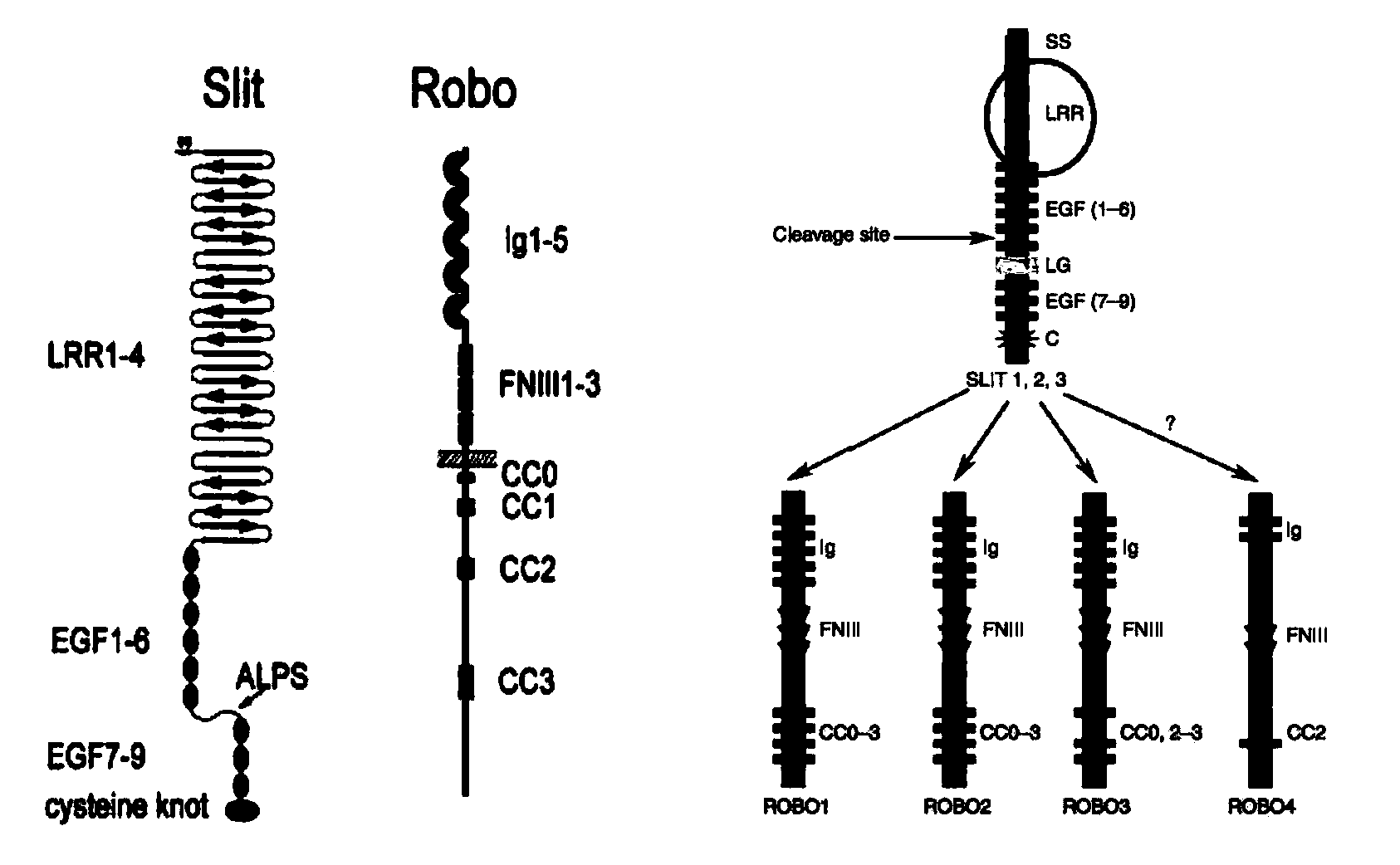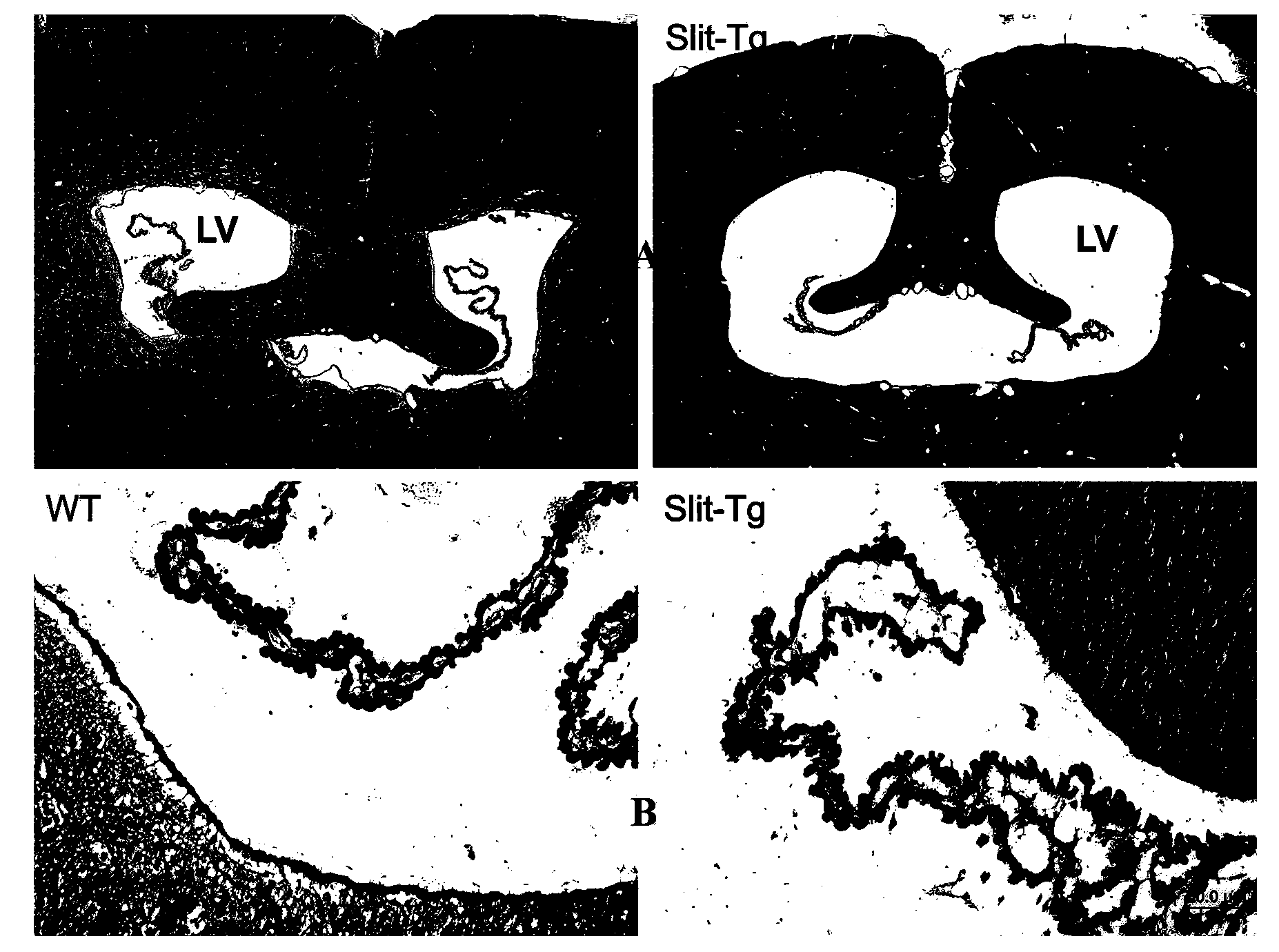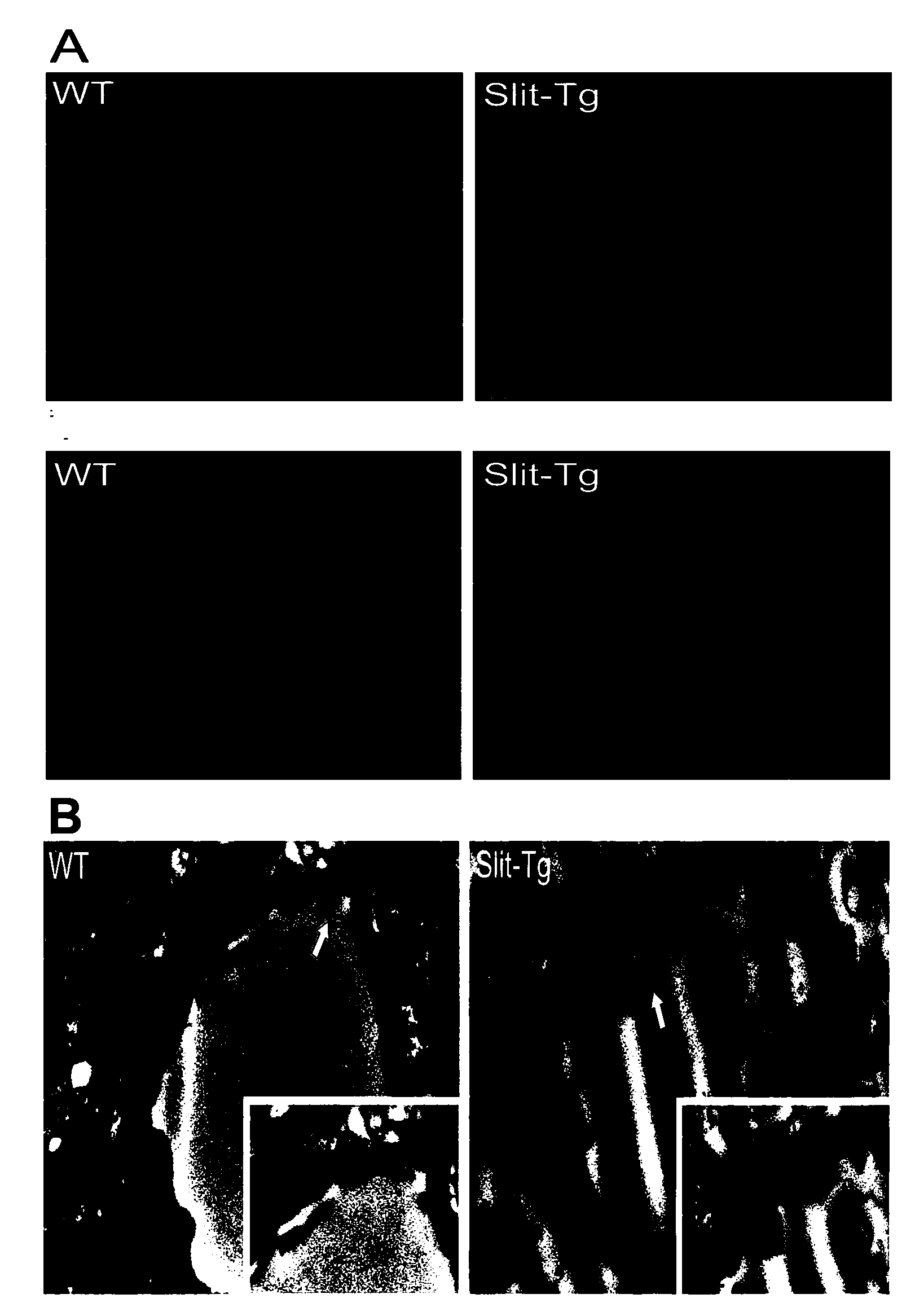Construction method and application of transgenic animal with blood-brain barrier permeability enhanced
A technology for transgenic animals and blood-brain barrier, which is applied in the field of construction of transgenic animal models, can solve the problems of inability to stably open the blood-brain barrier and restrict the development of drugs in the central nervous system.
- Summary
- Abstract
- Description
- Claims
- Application Information
AI Technical Summary
Problems solved by technology
Method used
Image
Examples
Embodiment Construction
[0025] Slit is an extracellular matrix secreted protein. It was discovered in Drosophila by Nusslein Volhard et al. in 1984. The encoded gene is 4p15.2. Its main function is to guide the direction of axon formation during the development of the central nervous system And the migration of nerve cells, and participate in the proliferation, apoptosis, adhesion and migration of non-neural cells during the formation of organs. Current studies have confirmed that the Slit protein family in mammals has three subtypes (Slit1, Slit2, and Slit3), which share 60% homology. Slit1 is only expressed in nerve tissue; Slit2 is distributed in nerve tissue, kidney, lung and endothelial cells; Slit3 is localized in mitochondria, mainly in lung tissue, and also in kidney, brain, heart, spleen and lymph nodes. The Slit protein consists of an N-terminal signal peptide, four consecutive leucine-rich repeat LRRs, and nine EGF-like functional regions (such as figure 1 ). The LRR repeats are required...
PUM
 Login to View More
Login to View More Abstract
Description
Claims
Application Information
 Login to View More
Login to View More - R&D
- Intellectual Property
- Life Sciences
- Materials
- Tech Scout
- Unparalleled Data Quality
- Higher Quality Content
- 60% Fewer Hallucinations
Browse by: Latest US Patents, China's latest patents, Technical Efficacy Thesaurus, Application Domain, Technology Topic, Popular Technical Reports.
© 2025 PatSnap. All rights reserved.Legal|Privacy policy|Modern Slavery Act Transparency Statement|Sitemap|About US| Contact US: help@patsnap.com



